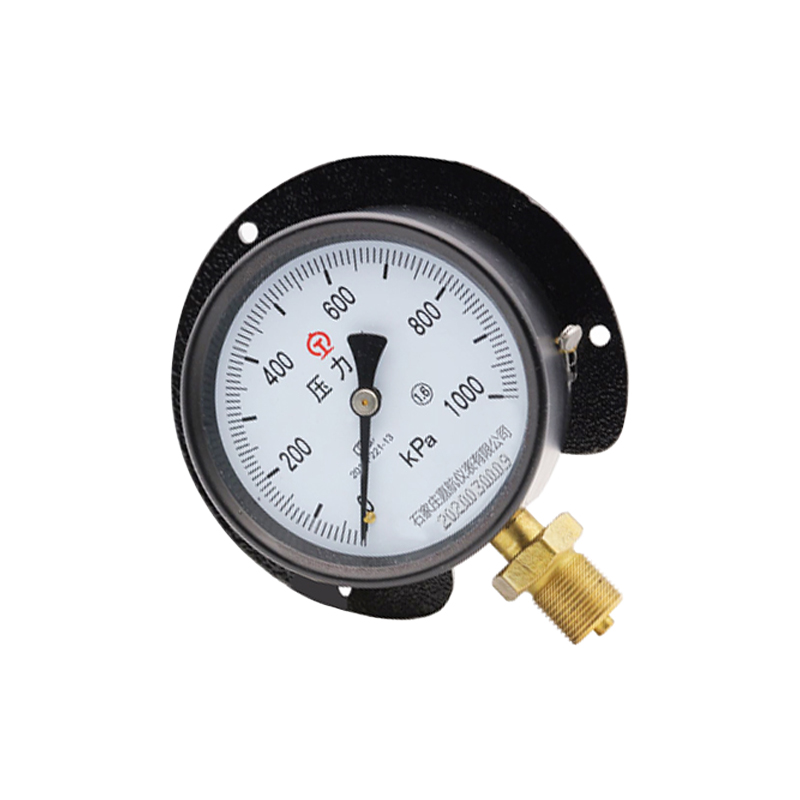
Nov . 04, 2024 16:23 Back to list
Innovative Isolating Diaphragm Pressure Gauges Developed in China for Enhanced Measurement Accuracy
Understanding China Isolating Diaphragm Pressure Gauges
Pressure gauges are critical instruments used in various industries for measuring the pressure of gases and liquids. Among the diverse types of pressure gauges available, isolating diaphragm pressure gauges stand out due to their unique design and functionality. In this article, we will delve into the intricacies of China isolating diaphragm pressure gauges, exploring their construction, advantages, applications, and the role they play in enhancing industrial safety and efficiency.
What is an Isolating Diaphragm Pressure Gauge?
An isolating diaphragm pressure gauge employs a diaphragm, a flexible membrane that separates the measuring element from the medium being measured. This design is particularly beneficial when the medium is corrosive, viscous, or contains solid particles. The diaphragm serves as a barrier, ensuring that the internal mechanism of the gauge remains unaffected by the properties of the measured medium.
In China, these specialized pressure gauges have gained popularity across multiple sectors due to their reliability and accuracy. They are especially essential in environments where traditional gauges would fail to perform effectively.
Construction and Working Principle
The construction of an isolating diaphragm pressure gauge typically comprises several key components a diaphragm, a pressure chamber, a transmitter, and a display unit. The diaphragm is made from materials resistant to corrosion, such as stainless steel or special alloys. This feature ensures that the gauge can withstand harsh environments while maintaining its integrity.
When pressure is applied to the medium, the diaphragm flexes, transmitting the pressure forces to the internal mechanism. This action causes a corresponding movement in the gauge's transmitter, which is connected to the display unit. The measured pressure is then converted into a readable value, allowing operators to monitor the pressure levels effectively.
Advantages of Isolating Diaphragm Pressure Gauges
1. Corrosion Resistance The primary advantage of isolating diaphragm pressure gauges is their ability to withstand corrosive substances. This feature makes them suitable for applications involving aggressive chemicals, such as in the petrochemical and pharmaceutical industries.
china isolating diaphragm pressure gauge

2. Protection Against Contamination Since the diaphragm isolates the measuring element from the medium, these gauges are less likely to become contaminated. This leads to more reliable measurements and extends the lifespan of the instrument.
3. Viscous and Slurry Applications The design of isolating diaphragm gauges allows them to handle viscous fluids and slurries effectively. Without the need for physical contact with the medium, these gauges can provide accurate readings without clogging or blockage.
4. Versatility These gauges can be adapted for use in a wide variety of applications, from general industrial processes to specific laboratory settings. Their flexibility caters to diverse industries, including food and beverage, HVAC, and water treatment.
5. Enhanced Safety In industries where hazardous materials are involved, the use of isolating diaphragm gauges improves safety by preventing leaks and potential exposure to harmful substances.
Applications in Various Industries
Isolating diaphragm pressure gauges find applications across numerous sectors, including
- Petrochemicals In oil and gas industries, they are used for measuring the pressure of volatile products while ensuring safety and accuracy. - Pharmaceuticals These gauges are integral in maintaining sterile environments and measuring pressures without contamination. - Food and Beverage Ensuring that conditions are safe for food processing requires reliable pressure measurements. Isolating diaphragm gauges contribute to maintaining hygiene and preventing contamination.
- Water Treatment Monitoring pressure is vital in water treatment plants, where these gauges help manage filtration and treatment processes.
Conclusion
In conclusion, isolating diaphragm pressure gauges are indispensable tools in the industrial landscape, particularly in China, where diverse manufacturing and processing industries thrive. Their design not only addresses common challenges faced by traditional gauges but also enhances safety and reliability in various applications. As industries continue to evolve, the demand for advanced measuring instruments like isolating diaphragm pressure gauges is likely to grow, cementing their importance in maintaining operational efficiency and safety standards.
-
High-Precision 5 Valve Manifold Differential Pressure Gauge Suppliers
NewsApr.29,2025
-
High-Precision Diaphragm Vacuum Pressure Gauges Manufacturers & Quotes
NewsApr.29,2025
-
Omega Differential Pressure Gauges High Accuracy & Durability
NewsApr.28,2025
-
Low Pressure Differential Pressure Gauges Precision Solutions & Quotes
NewsApr.28,2025
-
Digital Diaphragm Pressure Gaauge Precision Measurement & OEM Quotes
NewsApr.28,2025
-
Differential Pressure Gauge China Price High-Accuracy & Best Quotes
NewsApr.28,2025
